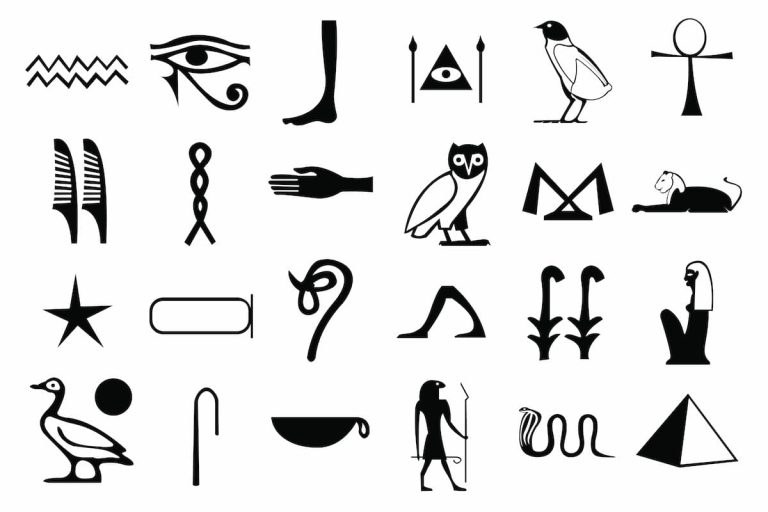The 15 Most Important Egyptian Symbols and Their Meanings
The ancient Egyptian Symbols are a way of life that is highly appreciated because of the many symbols that they possess and which carry deep spiritual, cultural, and philosophical meanings. These Egyptian symbols were more or less related to religions, the afterworld, and the social stratification at that time. These were present in everything from hieroglyphic inscriptions to amulets and buildings, and they conveyed the ancient Egyptian notions of life, death, the Universe, and everything in between their values. The following are the 15 most essential symbols in Egyptian society, meaning much in the ancient world.
1. Ankh (𓋹): The Key of Life
Regarding ancient Egyptian symbols, the ankh is perhaps one of the most popular. Also known as the ‘key of complex’ or ‘breath of life,’ the ankh stood for the concepts of life lived forever, principles of resurrection, and creative influences. The ankh was often seen within the closer grasp of gods, especially in illustrations where the gods are pictured giving life to the pharaoh and the dead. The loop cross was not only a representation of Earthly life but of life after death, too, thus strengthening the Egyptian culture of life after death. The ankh is found in many tomb paintings or sarcophagi drawn cut to remind of the deceased’s entry into everlasting life. The oval ring on top could also mean a sun rising with the cross, denoting the life lived on Earth.
- Meaning: Life, immortality, divine power.
- Appearance: A cross with a loop at the top, often held by gods and pharaohs.

2. Eye of Horus (𓂀): Protection and Healing | Egyptian Symbols
Eye of Horus, or Wadjet as it is also known, is a feminine goddess whose work includes health, nurture, and preservation of health. As we see in the legends, Horus, the falcon-headed deity, once fought with Set, the god of chaos, and lost one of his eyes. Later, the eye was embellished and given back to him by Hator, the goddess; thus, the Eye of Horus became a representation of mending, especially when the completeness of a person is in question.
Khat was believed to turn away evil forces and shield the possessor from threats while ensuring safety and wealth. Such a symbol was frequently incorporated into amulets, which were, in turn, used both by the living and the dead to call for the highest protection. For instance, the Eye of Horus would also be drawn on sarcophaguses to facilitate the journey to the other world.
- Meaning: Protection, healing, good health.
- Appearance: A stylized human eye with distinctive markings that mimic the sight of a falcon.
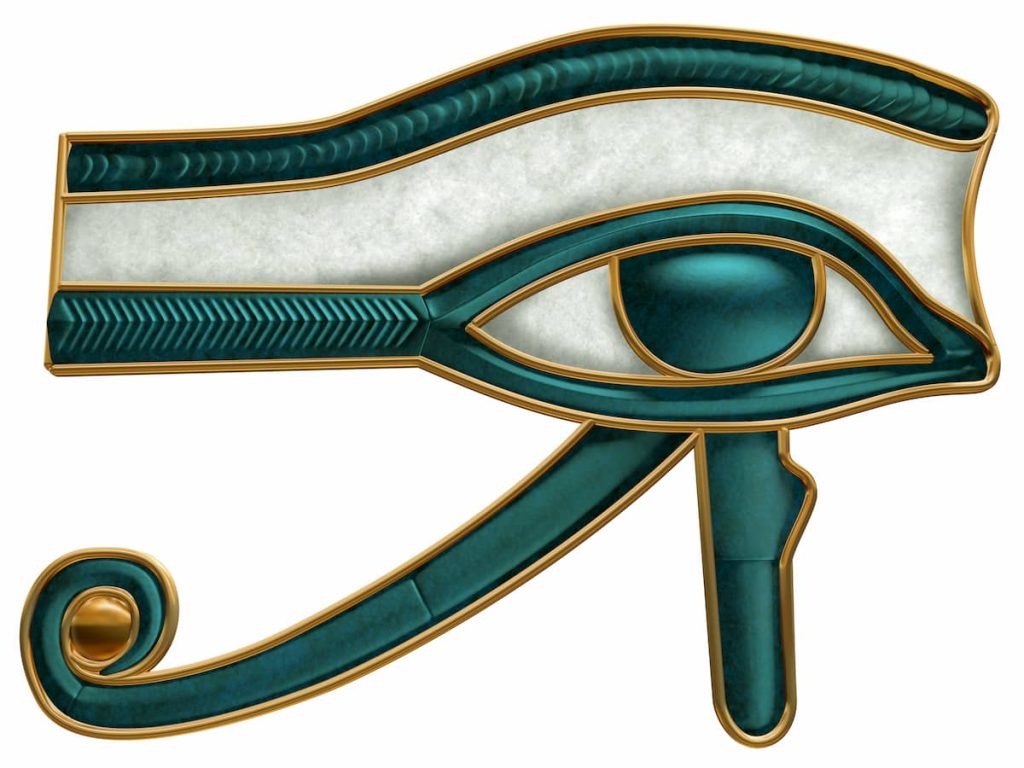
3. Scarab Beetle (𓆣): Transformation and Rebirth | Egyptian Symbols
The scarab beetle, an insect widely known in modern culture, has, in fact, a crucial place in ancient Egyptian mythology, as it represents change, new life, and the never-ending cycle of life. The scarab, commonly referred to as a dung beetle, was of great importance to the sun god Khepri, who the Egyptians imagined rolled the ball of sun like the beetle rolls its ball of dung. This everyday occurrence of the sun rising and setting was an emblem of creating and recreating. Scarabs were widely used in amulets and frequently wrapped clothes and encased the dead to preserve them for a safe rebirth in the next world. These amulets were believed to protect the heart from being eaten during the ‘Weighing of the Heart’ ceremony, resulting in a favorable judgment in the afterlife.
- Meaning: Rebirth, renewal, the sun’s movement.
- Appearance: A beetle-shaped object, often crafted as an amulet or carved into tombs.

4. Djed Pillar (𓋁): Stability and Strength
The djed pillar, known in ancient Egypt, has stood the test of time and symbolizes stability, fortitude, and strength. Another ancient Egyptian deity, djed, was associated with Osiris, the god of the dead and reincarnation, for he represented Osiris’s spine and Otis’s strength to perish and prosper once more.
Due to its meaning of stability in the realms of humanity and the divine, this sign was also crucial in the context of Egyptian burial literature and rituals. The symbol was used in the structure of the coffins and caskets to provide the deceased with the inner strength to overcome the challenges of the underworld. It was also used in the ‘Raising of the Djed‘ ritual, conducted within the scope of the corollary purposes to emphasize the order of the Universe, which the pharaoh was responsible for.
- Meaning: Stability, eternal life, strength.
- Appearance: A tall, column-like structure with four horizontal bars at the top, resembling a spine.

5. Uraeus (𓆙): Royal Authority and Protection
The Uraeus is an image of a seated snake/dragon, primarily associated with royalty and the divine water in the sky. Pharaohs, especially in their crown and headdress decorations, adorned this symbol because it was linked to the goddess Wadjet, the goddess of lower Egypt.
The cobra’s ability to strike enemies rendered it a powerful image representing a pharaoh’s power to rule by divine right and shield Egypt from any aggressors. The serpents were also considered protective ornaments, keeping off lousy luck and protecting the king during his rule and even after his death. Since it connotes the concept of kingship, the Uraeus is also believed to have been associated with the vulture that complemented it, which was used to depict the unification of upper and lower Egypt.
- Meaning: Royalty, divine protection, sovereignty.
- Appearance: A cobra in an upright, defensive position, ready to strike.
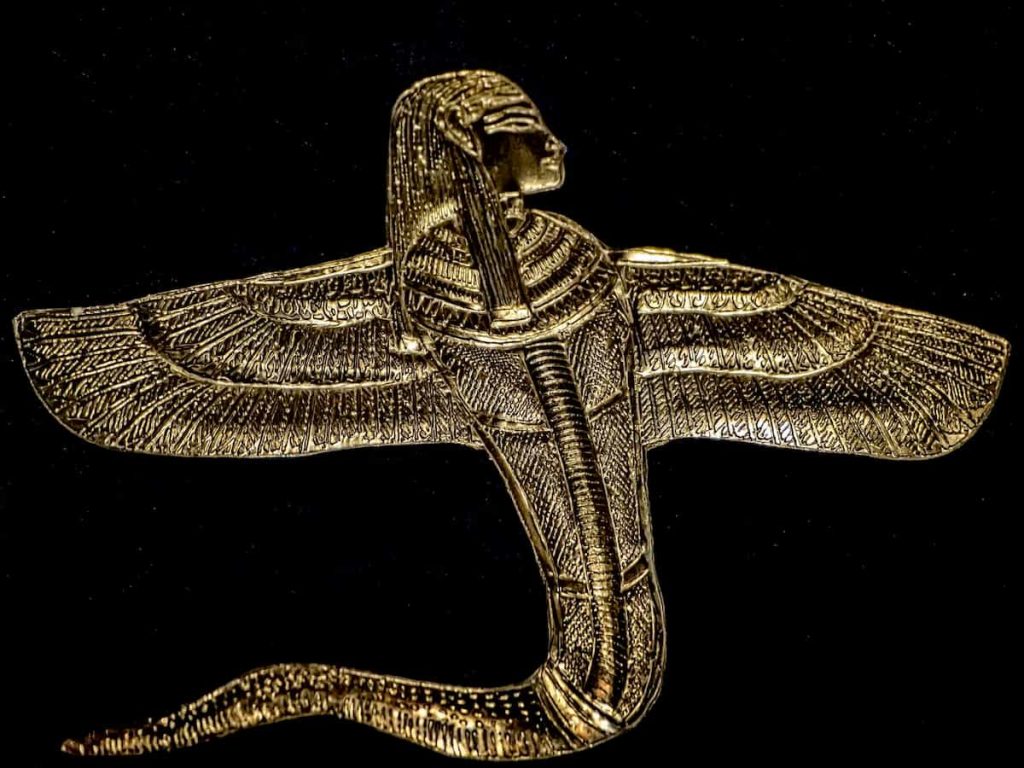
6. Shen Ring (𓊽): Eternity and Protection
The shen ring embodies the qualities of timelessness, fullness, and protection associated with the heavens and is worshiped. The meaning of the word Shen is encircled because the ring has no beginning and no end, which shows the ring’s strength as a sign of eternal life and infinite protection. Gods were usually depicted with this icon to emphasize their everlasting protection over the cosmos and the king. Pharaonic images show them coming with the shen ring as a sign of their divine rule and maintaining order within the Universe. Tomb and other religious practices inscribing the Shen symbol at the back of the images of the deceased helped to revere the dead in the afterlife.
- Meaning: Eternity, infinity, protection.
- Appearance: A circular loop of rope with a horizontal bar underneath.
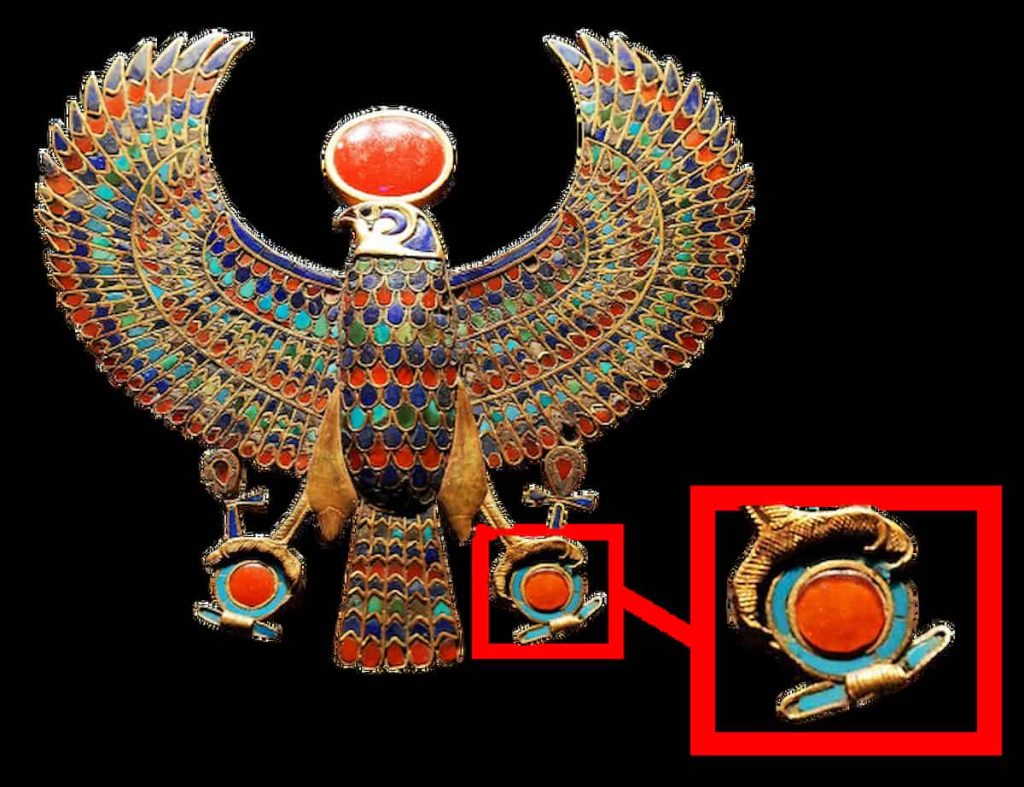
7. Lotus Flower (𓇼): Rebirth and Creation
In ancient Egypt, the lotus flower took on deep symbolic connotations concerning creativity, regeneration, and purity. The lotus has a distinctive characteristic: it opens in the morning and closes at night, representing the sun’s travel across the sky and the cycle of life and death. Hence, the flower was linked to the sun god Ra, creation, and the principle of new birth. The south of the sky was believed to be in the shape of a lotus from the waters of creation. The lotus was a prevalent theme in religious paintings and scriptures. It was often associated with images of the deceased, who were thought to brave the underworld in search of returning to life.
- Meaning: Rebirth, creation, purity.
- Appearance: A stylized blue or white lotus in bloom.
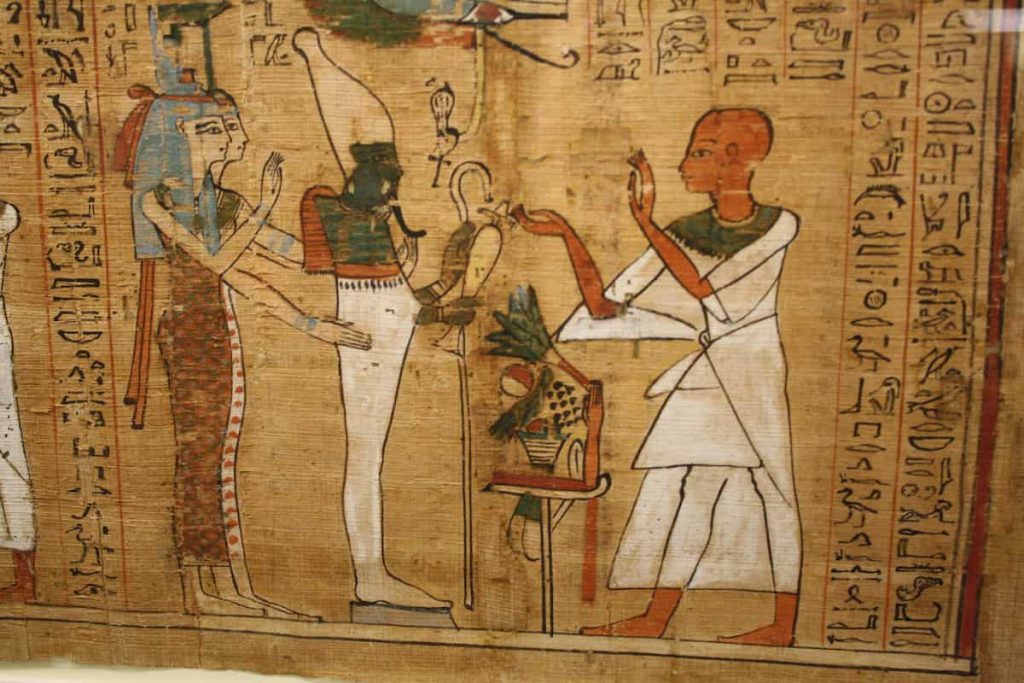
8. Tyet (𓏏𓏥): The Knot of Isis
The Tyet, also called the Knot of Isis, is a design often associated with the goddess Isis and her helpful and protective traits. The Tyet is similar to the ankh, except the arms are sweeping, flaring downwards. It represented life in both the dead and the living and embodied nurturing. It was one of the protective and health-related symbols of the goddess Isis, which included fertility and motherhood. As part of mortuary practices, along with the ankh, the symbol was positioned with or engraved onto the body of the deceased women for extra safeguard. It was also used as a necklace with the belief that the goddess would protect the woman from danger during childbirth.
- Meaning: Protection, welfare, motherhood.
- Appearance: A looped knot with curving arms, similar in shape to the ankh.

9. Was Scepter (𓏆): Power and Dominion
The Was scepter signified might, sovereignty, and supremacy in this world and the next. The use of the wand is associated with gods and kings, representing their power over deities of chaos, which is an essential duty of a pharaoh. Images of the scepter are often seen in the hands of gods like Anubis and Isfet, which refers to their ruling of life, death, and chaos. The scepter was also buried with the dead so that they would be able to rule in the next world.
- Meaning: Power, authority, control.
- Appearance: A long staff with a forked base and an animal head at the top.
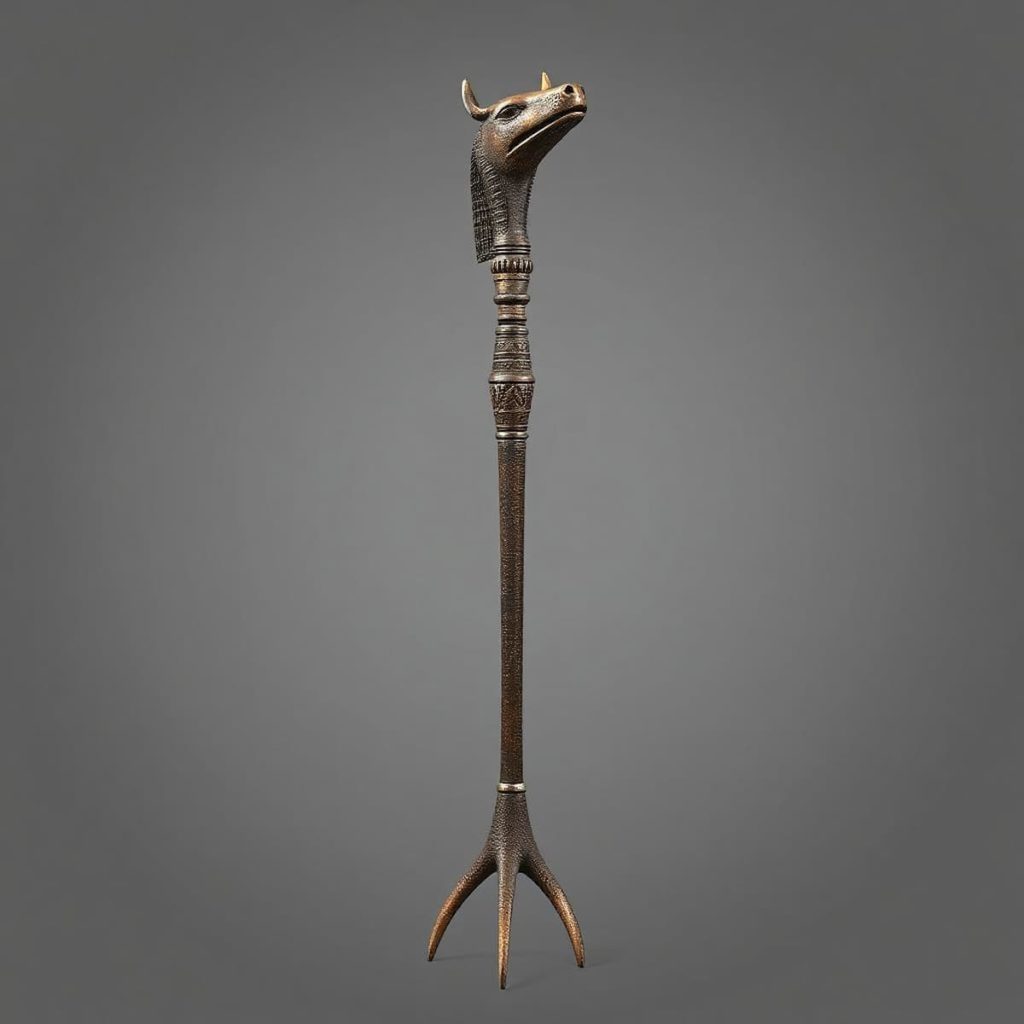
10. Ba Bird (𓅛): The Soul
The Ba bird was considered the soul and extremely important for one’s identity in Egyptian culture. The Egyptians also regarded the Ba as a dynamic part of the self who could move from the earthly sphere to the heavenly ones. Upon death, it was believed that the Ba would return to one’s body every night, allowing the person a chance for continuity in existence after death. The Ba was usually represented as a bird with a human head, which reflected the particular personality of the deceased. The notion of Ba was essential to the Egyptians and became the most crucial part of their belief system regarding the afterlife.
- Meaning: The soul, individuality, mobility.
- Appearance: A bird, often a falcon or stork, with a human head.

11. Ka (𓂓): The Life Force
The Ka represented every living entity’s life-giving power or spiritual breath. It was one of the core elements of the Egyptian identity and is said to have existed even after one’s mortality. As per their beliefs, Ka was a person’s ‘double’ who lived with him, but not in the same body. After death, offerings nourished a Ka, so food and drinks were kept in the tombs. Ka was also vital in Egyptian burial beliefs because it was regarded as one of the determinants for the survival of the deceased in the afterlife.
- Meaning: Vital energy, spirit, life force.
- Appearance: Two upraised arms, often depicted hovering over the deceased.
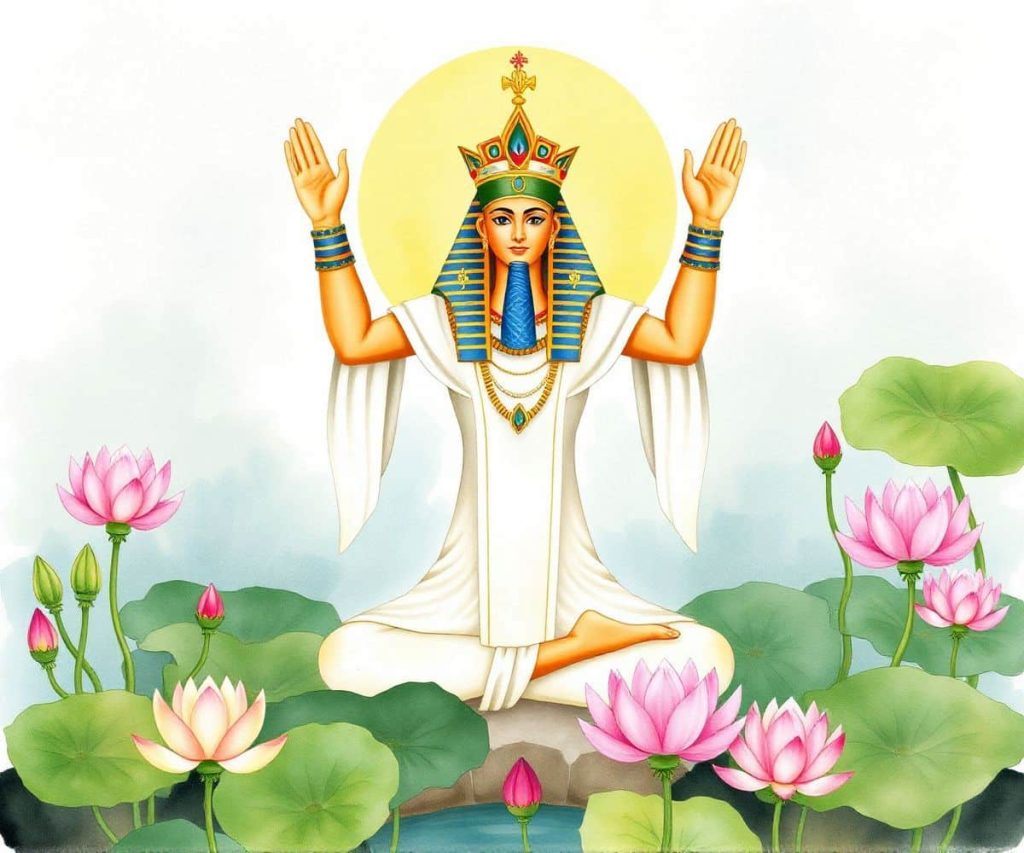
12. Sesen (𓇌): The Sacred Lily
The Sesen, more commonly known as the Sacred Lily, is a flower recognized less than it ought to be, yet one rich in meaning in ancient Egypt. Just like the lotus flower, the Sesen represented the ideas of innocence, existence, and rejuvenation. Moreover, Egyptian civilization looked at this water lily as a symbol of divine regeneration in all its forms. Its power to fade away and yet reappear each morning was analogous to life after death. Additionally, there was one more significance of the lily: it was also relatively widespread in funerary images as it appeared in tombs and temples, depicting the death and rebirth cycle of the cycle of human existence.
- Meaning: Purity, rebirth, life.
- Appearance: A stylized lily, often appearing in religious texts and art.

13. Heqat (𓍯): The Frog of Fertility | Egyptian Symbols
In Egyptian antiquity, the frog represented concepts of earth and rebirth and was connected in mythology with Heqet, who was credited with interceding on behalf of women in labor as a goddess of birth. Notably, thanks to the sweep of the Nile every year, which left Eswatini teeming with alkaline water where the profusion of frogs flourished during the dry and wet seasons, respectively, frogs and toads were symbolically associated with abundance, fullness, and procreation. Furthermore, Heqet was usually represented by the head of a frog. Consequently, it is no wonder that charms shaped like frogs were used to maintain the good health of women and their babies during pregnancy.
- Meaning: Fertility, birth, creation.
- Appearance: A small frog, often featured on amulets and in depictions of Heqet.
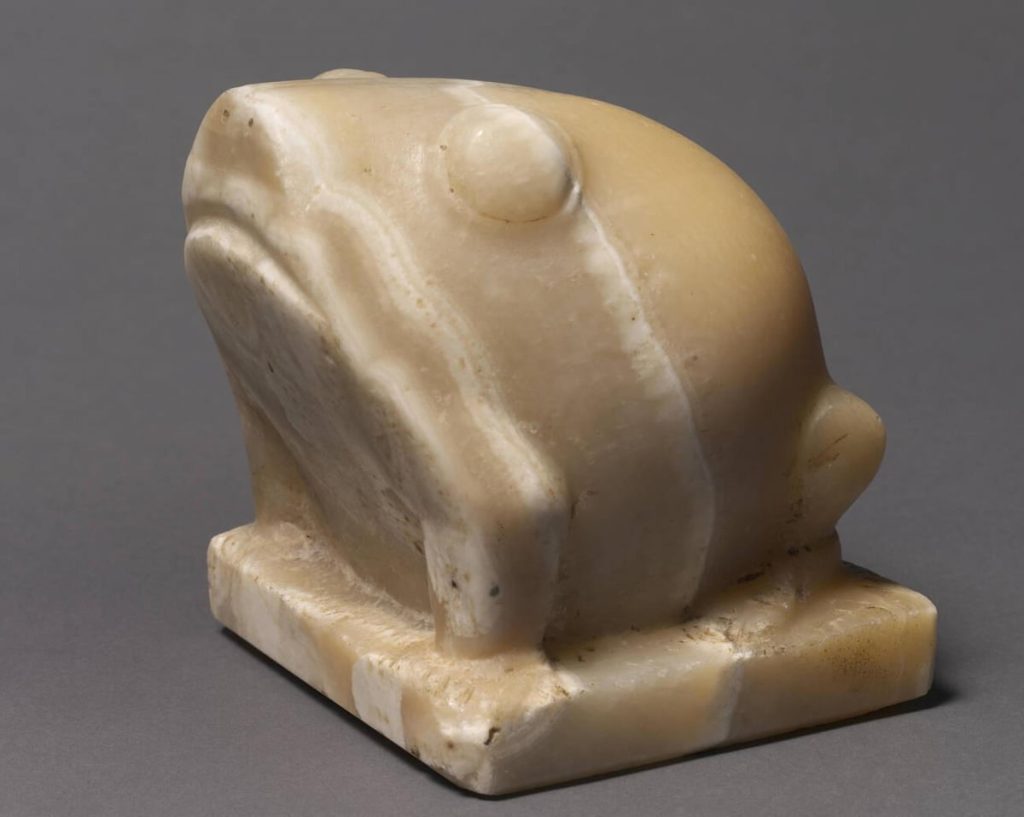
14. Feather of Ma’at (𓆄): Truth and Justice | Egyptian Symbols
The Feather belonging to the deity Ma’at conveyed ideas relating to truth, justice, equilibrium, and order in the Universe and was viewed as such. Specifically, a goddess called Ma’at personified these ideas. During the funerary rites of the Egyptians, the fundamental aspect was the Weighing of the heart against the Feather of Ma’at. The soul was considered pure and allowed into the afterlife only when her Feather outweighed the heart. Consequently, it denoted the natural order of things and formed the basis of the moral and legal codes of the Egyptians.
- Meaning: Truth, justice, moral integrity.
- Appearance: A simple feather, often shown in depictions of Ma’at or judgment scenes.
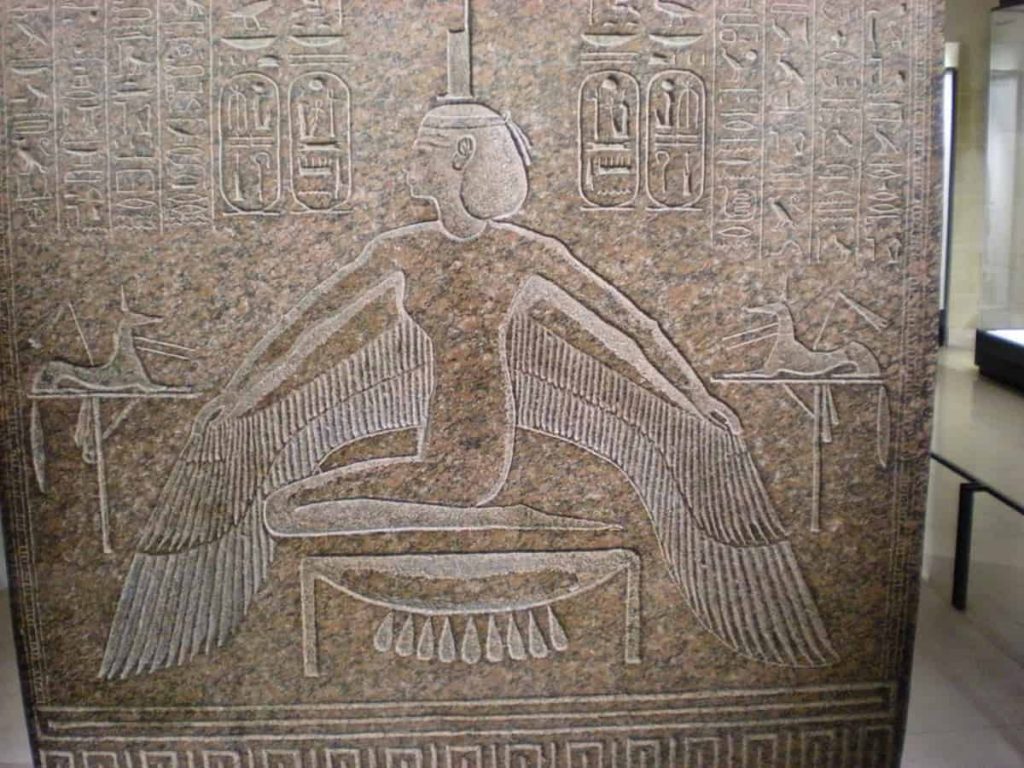
15. Sphinx: Guardian and Protector | Egyptian Symbols
A sphinx is described as a monster with a lion’s body and the head of a man or a god, ideally associated with strength, wisdom, and protection. Notably, the most popular among these creatures is the Great Sphinx of Giza, which was assumed to guard the pyramids and housed the pharaohs. Thus, the Sphinx became a representation of kingship and the god Pharaoh, the defender and ruler of Egypt. Furthermore, the imagery signifies the king’s duty to uphold the Universe by preserving order within the state and its inhabitants against any possible disorder.
- Meaning: Protection, strength, wisdom.
- Appearance: A lion’s body with the head of a human is most famously depicted in monumental sculptures.
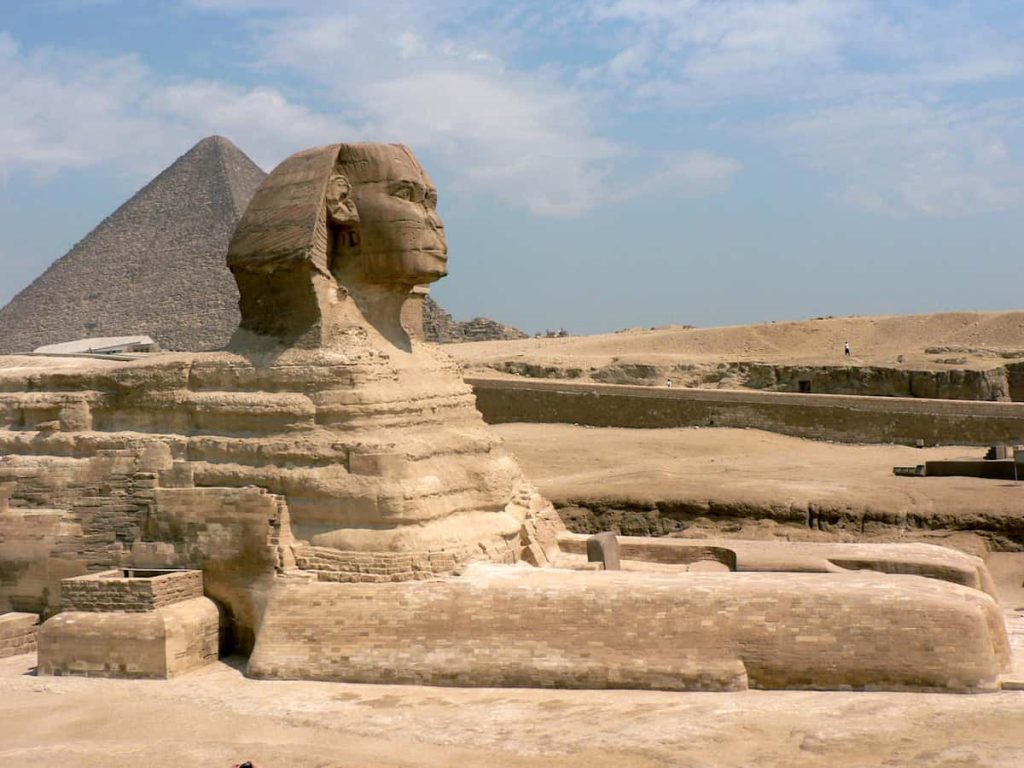
Conclusion of Egyptian Symbols
As the average Egyptian lived, so did the most familiar Egyptian symbols, which held many meanings. Importantly, each symbol was not simply an artistic or merely decorative element. Instead, such patterns fulfilled an essential purpose; they conveyed things that were believed in quite strongly, concerning life, death, the gods,
and the cosmos. The Ankh, death and resurrection, the feather of Ma’at, philosophy, ethics, the lotuses, and many more graphics were intricately woven into the fabric of ancient Egyptian life. Even today, their influence is felt in the interpretations of Egypt, which somehow ensures the survival of its ancient civilization.

